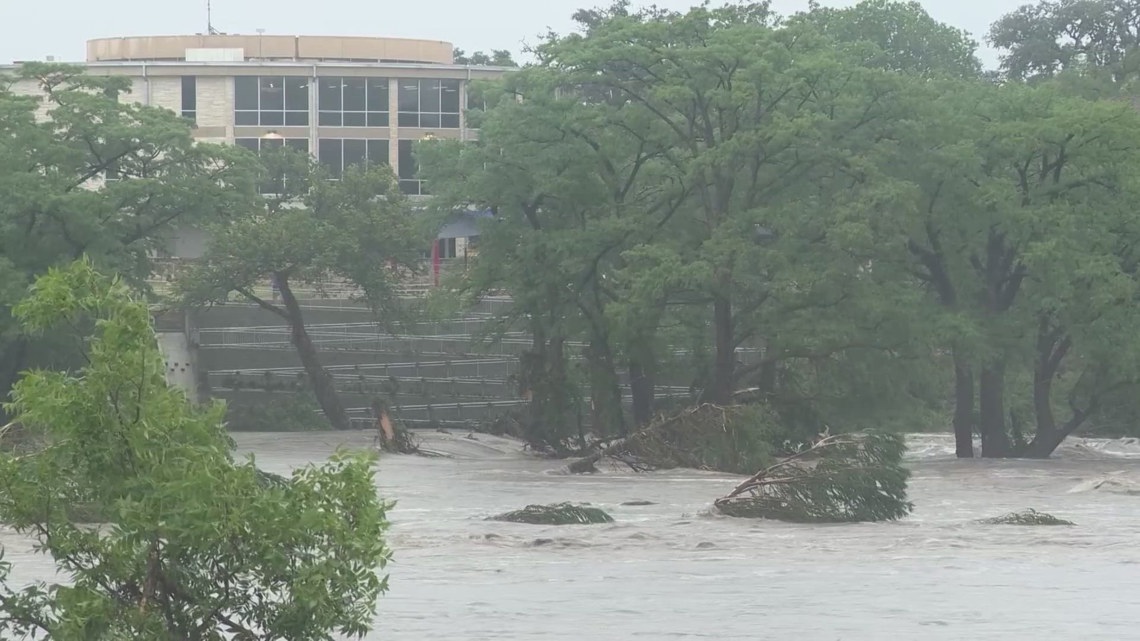
Texas Senate Committee on Disaster Preparedness and Flooding passed SB1, which could put new rules on Texas counties.
On Friday morning, Texas Senator Charles Perry did not mince words about the immediate response to the July Fourth floods that ripped through Kerr County. Some of the measures in SB1 were a direct rebuke to the shortcomings lawmakers found in the county’s response.
“All this stuff should already be in place,” Perry said. “You should have already been doing this and it should have required very little additional resources.”
The remarks came as Perry laid out SB1 in the Senate Committee on Disaster Preparedness and Flooding that morning.
SB1 is the Senate’s bill intended to address multiple “needs and challenges” revealed by the horrifying July Fourth flooding that left more than 130 dead across the State of Texas. Of those deaths, 108 happened in Kerr County alone.
“We found gaps in our emergency responses on the local levels in the way of coordination, leadership, and training,” Perry said.
The bill creates clear “lines of succession” that detail which county official should be acting as the emergency management coordinator in the event of a crisis. On July Fourth in Kerr County, the designated County emergency management coordinator was sick and in bed when the flooding started. County leaders couldn’t point to anyone else who took on his role, and the sick official eventually got to a command center around 6 a.m. after the flooding hit.
SB 1 would make the county sheriff the emergency management coordinator (EMC) if the current EMC was unavailable. The county commissioner with the longest period of continuous service would be next in line.
The bill would also require the EMC to under annual training with the Texas Division of Emergency Management and get a state license. There are currently no training or certification requirements for the EMC position.
Additionally, the EMC would be responsible for working with local first responders to conduct an annual drill, in the field, to prepare for a possible disaster. It wasn’t clear when Kerr county last had such a drill but Perry made it clear that an on-paper exercise would not be good enough.
“Not a tabletop conversation, not a hypothetical on paper. You will actually drill in these areas with a TDEM representative on-side for critique. You don’t get to have a plan or say ‘we have the plan’ but never actually test the plan,” Perry said.
Yet another rule would require counties with 68,750 or fewer residents to have a unified city and county incident command post during a disaster. That requirement might seem strange without context, but during the July Fourth flooding Kerr County ended up with two different command posts during the disaster: one that the City of Kerrville set up and one that county responders set up. The county didn’t get both sides on the same page until the Texas Division of Emergency Management (TDEM) showed up and suggested they do so. This was important as TDEM had state assets coming in and needed to know who was in charge in the county and were those assets should be staged.
SB1 would also create new responsibilities for camp grounds located in a 100-year floodplain. If there is a flash flood warning in the area, camp operators would now be required by state law to immediately move campers to a safe place. Camp operators would also be required to create emergency plans and provide those plans to the local county. If a cabin was located in a 100-year floodplain, that cabin must have a ladder that will allow campers to access the roof in an emergency.
Perry said there should not be hesitation if a flood could be imminent.
“If I am a commercial enterprise and I have taken people under my tutelage to house them, then at flash flood warning you will shelter to higher ground or evacuate,” Perry said. ” We had some warning systems in place (on July Fourth) but what we didn’t have is leadership willing to do an evac call at the right time. So now it’s not optional.” Perry said.
The Senate Committee on Disaster Preparedness and Flooding passed SB1 by unanimous vote and sent it to the Senate floor on Friday.
